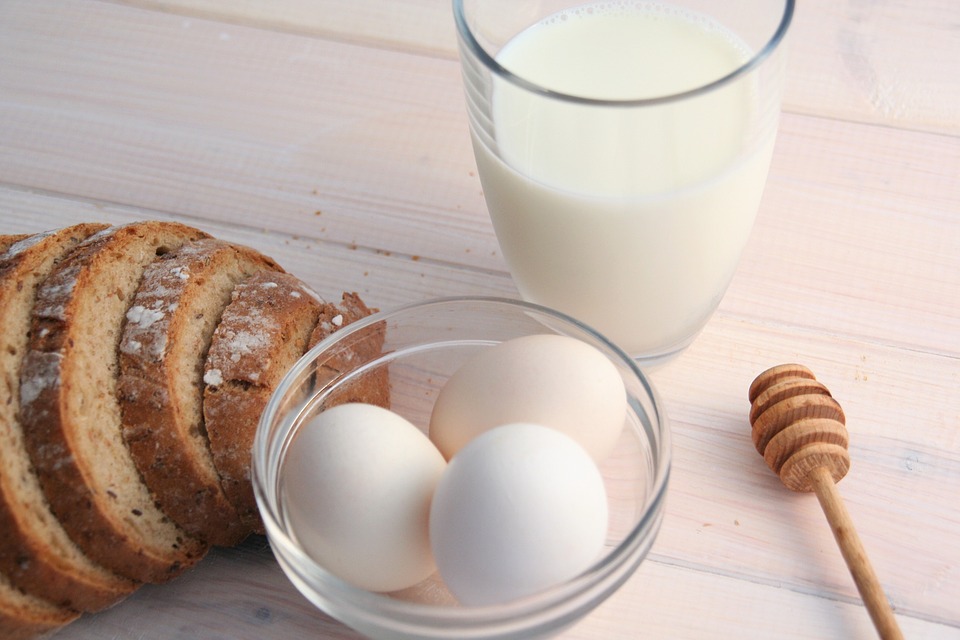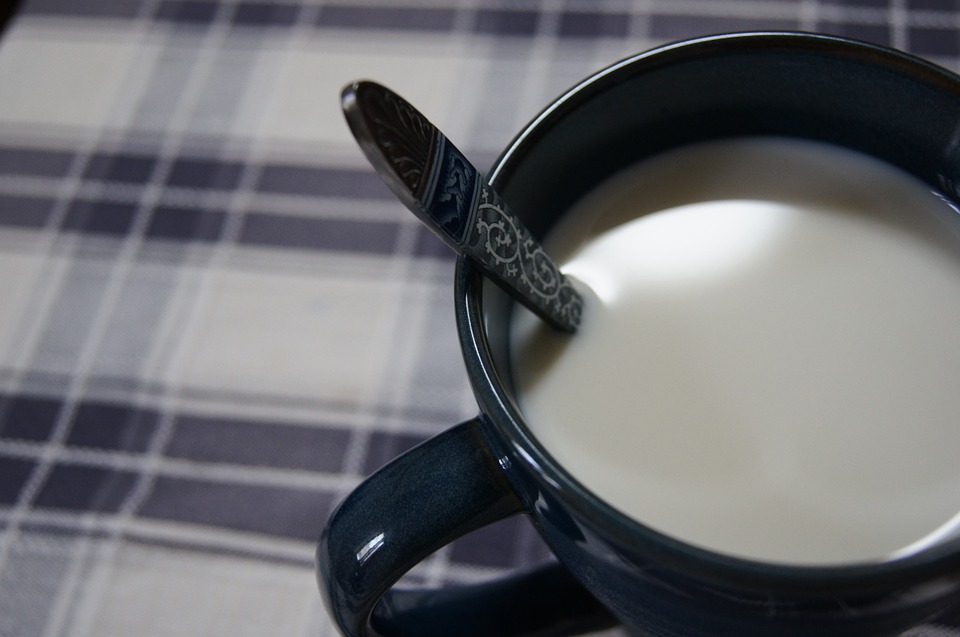This article dives into the age-old question of whether cats can safely enjoy a glass of milk. We'll unveil the complex relationship between felines and lactose, exploring why most adult cats are lactose intolerant, the potential health risks associated with milk consumption, and offering alternative options for pampering your furry friend. We'll also unravel the fascinating history of milk consumption in cats, dispel common myths, and provide expert advice on how to make informed decisions about your cat's diet. Join us as we separate fact from fiction and ensure your feline companion enjoys a healthy and fulfilling life.
Part 1: The Science Behind Lactose Intolerance in Cats

1.1 The Digestive Process: A Closer Look
- Lactose, a sugar found in milk, is a complex molecule that requires specific enzymes for digestion.
- Lactase, the enzyme responsible for breaking down lactose, is produced in the small intestine.
- This enzyme effectively splits lactose into simpler sugars, glucose and galactose, which can be easily absorbed by the body.
1.2 The Feline Lifecycle and Lactose Tolerance
- Kittens are born with high levels of lactase, allowing them to readily digest their mother's milk, which is their sole source of nourishment in the early stages of life.
- As kittens grow into adulthood, lactase production gradually declines, usually reaching a low point by the age of six months.
- This decline in lactase production leads to lactose intolerance, a common condition in adult cats.
1.3 The Consequences of Lactose Intolerance
- When lactose-intolerant cats consume milk, their bodies struggle to break down the lactose, resulting in its fermentation by gut bacteria.
- This fermentation process produces gas, leading to discomfort, bloating, and flatulence.
- The undigested lactose also draws water into the intestines, causing diarrhoea, which can be watery and frequent.
Part 2: The History of Milk and Cats: A Cultural Perspective

2.1 The "Milk-Loving Cat" Myth: Origins and Perpetuation
- The image of cats relishing a bowl of milk is deeply rooted in popular culture, often portrayed in cartoons, movies, and everyday life.
- This perception is likely a combination of factors, including the observation of kittens nursing their mothers, the historical practice of offering milk to cats, and the romanticized view of felines.
- However, it's essential to remember that the vast majority of adult cats struggle to digest milk due to lactose intolerance.
2.2 Milk as a "Treat": A Well-Intentioned Misconception
- Throughout history, milk was often offered to cats as a treat or supplement, with the intention of providing them with nourishment and affection.
- This practice, although well-meaning, failed to acknowledge the physiological limitations of adult cats, leading to potential health complications.
- It's crucial to recognize that milk is not a necessary or healthy dietary component for adult cats, and there are far better alternatives for pampering your feline companion.
Part 3: The Potential Health Risks of Milk Consumption
3.1 Digestive Distress: The Primary Concern
- As previously discussed, lactose intolerance can lead to unpleasant digestive symptoms, causing discomfort, bloating, gas, diarrhoea, and potentially dehydration.
- These symptoms can disrupt a cat's daily routine, impacting their energy levels and overall well-being.
- Chronic milk consumption can exacerbate these digestive issues, leading to further discomfort and potentially impacting their nutrient absorption.
3.2 Nutritional Inadequacy: An Unbalanced Diet
- Milk is not a complete food source for cats and lacks essential nutrients that are crucial for their growth, development, and overall health.
- Key nutrients missing from milk include taurine, arachidonic acid, and other vital vitamins and minerals.
- Relying on milk as a primary food source can lead to nutritional deficiencies, impacting their energy levels, immune system, and overall well-being.
3.3 Weight Gain and Obesity: A Hidden Danger
- Milk is relatively high in calories and fat, and excessive consumption can contribute to weight gain in cats.
- Obesity is a significant health risk for felines, increasing their susceptibility to conditions such as diabetes, heart disease, joint problems, and respiratory issues.
- Maintaining a healthy weight through proper nutrition and exercise is essential for your cat's longevity and quality of life.
Part 4: Unveiling the Alternatives: Healthy and Delicious Choices
4.1 Cat-Specific Milk Alternatives: A Safe and Nutritious Option
- Several commercial milk alternatives are specifically formulated for cats, addressing their dietary needs and lactose intolerance.
- These products are often lactose-free or low in lactose, making them easier for adult cats to digest.
- Many cat-specific milk alternatives contain added nutrients, such as taurine and arachidonic acid, to ensure a healthier and more balanced treat option.
4.2 Treats for Your Feline Friend: A World of Delights
- A wide variety of cat-safe treats are available, ranging from commercially prepared options to homemade delights.
- Look for treats made with high-quality ingredients, such as meat, fish, and poultry, and avoid those containing artificial colours, flavours, and preservatives.
- Consult with your veterinarian for recommendations on age-appropriate treats and appropriate portion sizes to ensure your cat enjoys treats responsibly.
4.3 Nutritional Supplements: Tailored Support for Specific Needs
- If your cat requires additional nutritional support, consider supplementing their diet with appropriate products, such as joint health supplements, hairball control formulas, or digestive aids.
- Supplements can address specific needs and enhance your cat's overall health and well-being.
- Always consult your veterinarian before introducing any new supplements to your cat's diet to ensure compatibility and safety.
Part 5: Navigating Your Cat's Dietary Journey: Expert Advice
5.1 The Importance of Veterinary Consultation
- The most reliable source of information regarding your cat's dietary needs is your veterinarian.
- They can provide personalized advice based on your cat's age, breed, health condition, and individual requirements.
- A vet can help you choose the right food, treats, and supplements to ensure your cat's optimal health and well-being.
5.2 Understanding Your Cat's Preferences
- While milk may not be the ideal option, some cats may enjoy the taste of certain milk alternatives or specific treats.
- Observe your cat's reaction to different foods and treats to determine their preferences.
- Offer small amounts and monitor their response, ensuring that you provide a safe and enjoyable experience, paying attention to potential signs of digestive distress.
5.3 Embracing a Balanced and Nutritious Diet
- The cornerstone of a healthy cat is a well-balanced diet, tailored to their specific needs, including age and activity level.
- High-quality commercial cat food, combined with appropriate treats and supplements (if necessary), provides all the essential nutrients.
- Regular veterinary check-ups and consultations ensure that your cat receives the best possible care and dietary guidance.
Part 6: Addressing Common Concerns: FAQs
6.1 Can kittens drink milk?
- While kittens can digest their mother's milk, they may experience digestive issues with cow's milk due to its higher lactose content.
- It's best to avoid giving kittens cow's milk and instead focus on providing them with a balanced diet tailored for their age.
- Consult your veterinarian for specific advice on feeding kittens, including appropriate milk alternatives.
6.2 What if my cat enjoys milk without any apparent problems?
- While some cats may tolerate milk without showing immediate symptoms, they may still experience long-term digestive issues.
- It's best to err on the side of caution and avoid giving your cat milk regularly.
- Providing a balanced diet with appropriate treats and supplements is a safer and healthier approach.
6.3 Can I give my cat lactose-free milk?
- Lactose-free milk may be easier for some cats to digest compared to regular milk, but it's still not a complete food source.
- While lactose-free milk might be less likely to cause digestive distress, it still lacks essential nutrients for cats.
- Opting for cat-specific milk alternatives is a safer and more nutritionally balanced choice.
6.4 My cat is vomiting after drinking milk. What should I do?
- If your cat is vomiting after consuming milk, it's crucial to stop giving them milk immediately.
- Consult your veterinarian to rule out any underlying medical conditions, such as a food allergy or gastrointestinal upset.
- Monitor your cat closely for any other symptoms and follow your vet's advice.
6.5 Is there a safe amount of milk I can give my cat?
- It's best to avoid giving your cat any milk, regardless of the amount.
- Even small quantities can trigger digestive issues and long-term health problems.
- Focus on providing a balanced diet with appropriate treats and supplements.
6.6 Are there any breeds of cats that are more prone to lactose intolerance?
- While all cats are susceptible to lactose intolerance, certain breeds may be more sensitive than others.
- Consult your veterinarian for breed-specific dietary recommendations and advice on potential sensitivities.
- It's always wise to approach feeding with caution and prioritize a healthy diet for all cats.
6.7 What about other dairy products like cheese or yoghurt?
- Similar to milk, most cats cannot digest cheese or yoghurt due to their lactose content.
- Some cats may tolerate small amounts of certain types of cheese or yoghurt, but it's best to err on the side of caution.
- Always consult your veterinarian before introducing any dairy products to your cat's diet.
Everyone is watching
-

Are Cat Ribs Flexible? Understanding Their Anatomy
CATS & KITTENSThis article delves into the fascinating world of feline anatomy, exploring the flexibility of cat ribs and ho...
-

Can Cats Eat Bananas? (Everything You Need to Know)
CATS & KITTENSThis article dives into the intriguing question of whether cats can safely enjoy the sweet, yellow fruit, bana...
-

Cat Lifespan: How Long Do Cats Live?
CATS & KITTENSThis comprehensive guide explores the factors influencing the lifespan of our feline companions, providing ins...
-

Can Cats Get COVID-19? What You Need to Know
CATS & KITTENSThis article will delve into the fascinating world of feline COVID-19 susceptibility. We'll explore whether ca...
-

Can Cats Eat Eggs? A Complete Guide to Egg Safety for Your Feline Friend
CATS & KITTENSWhen it comes to treating our furry companions, we all want to ensure we're doing what's best for them. Eggs...
